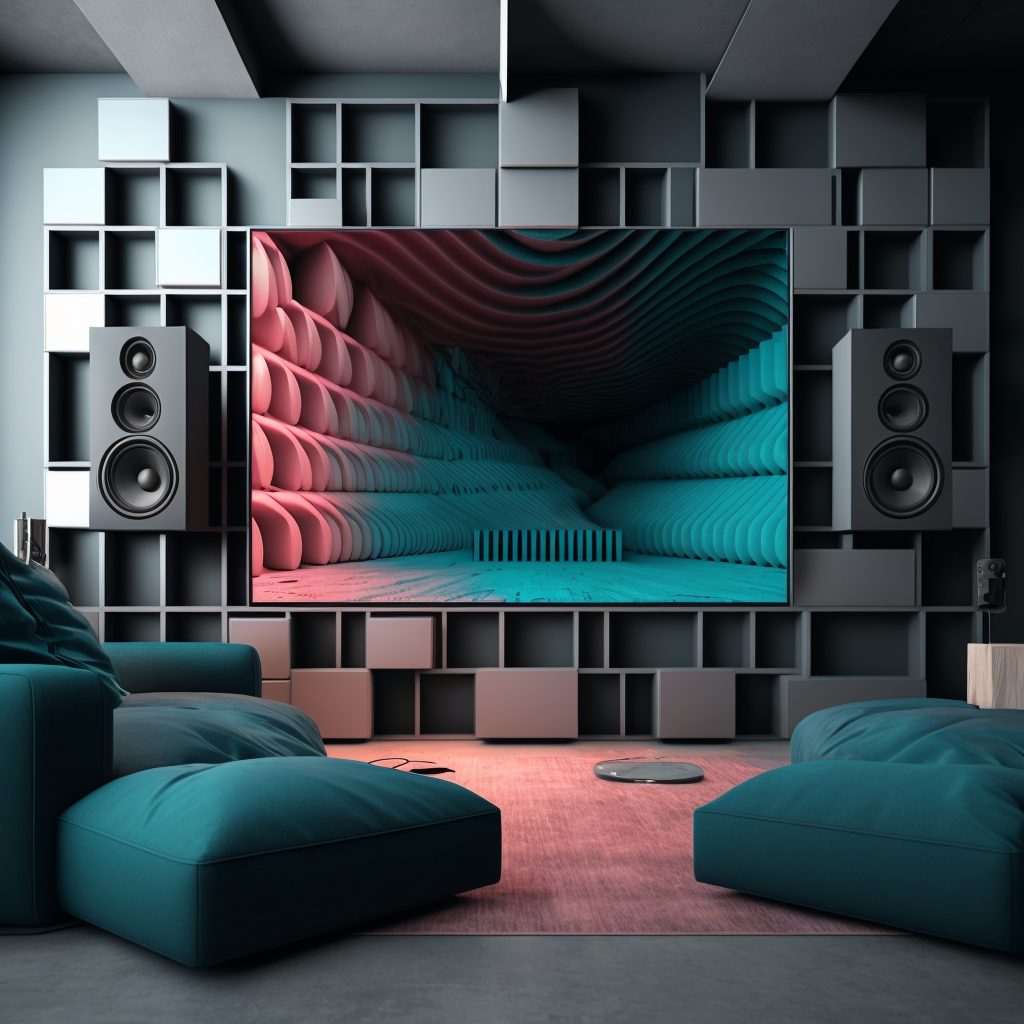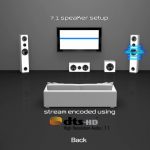Confused by terms like 2.1, 3.1, 5.1, 7.1, and 9.1 sound systems? You’re not alone. As you venture into the world of home theater setups, understanding these surround sound options is crucial.
Let’s unravel these audio systems together.
Stay with us for the next ten minutes as we delve into the nuances of home theater configurations. And if you’re keen on distinguishing between 2.1 and 3.1 soundbars, our in-depth comparison will guide you.
Let’s dive in!
Enigma behind the numbers
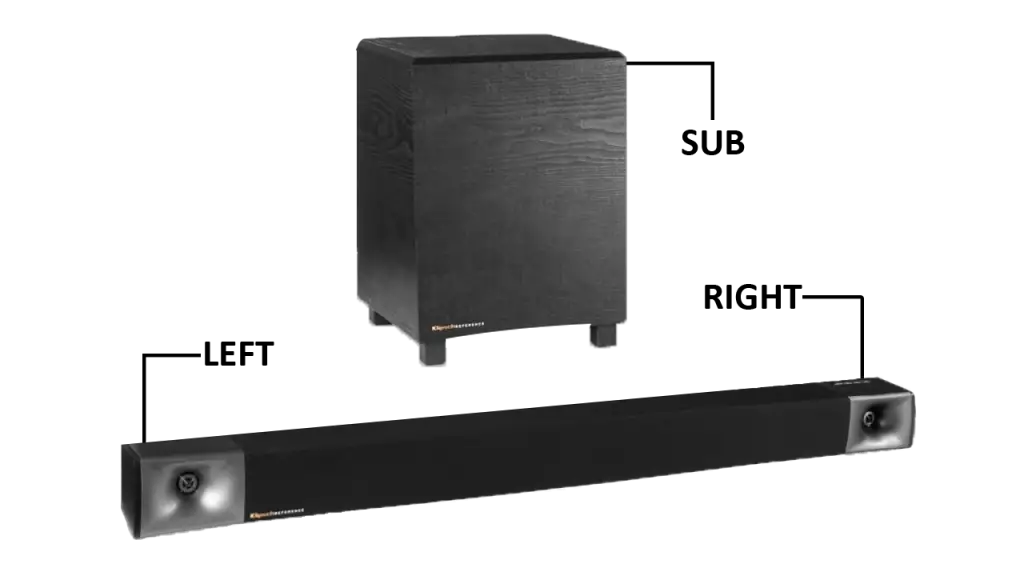
Understanding the numbers in sound systems like 2.1 or 7.1.2 is straightforward. The first number, such as the 2 in 2.1, denotes the main speakers. The subsequent number, like the 1 in 2.1, signifies the subwoofers. Occasionally, in setups like 7.1.2, a third number appears, indicating upward-firing or ceiling speakers.
The Numbers before the point (2 in 2.1) The primary number represents the main speakers in the sound system. For instance, in a 2.1 setup, the number 2 indicates two main speakers.
The number after the point (1 in 2.1) The number following the point, such as the 1 in 2.1, represents the subwoofers. In this case, there’s one subwoofer.
The third number (2 in 7.1.2) In configurations like 7.1.2, the third number, 2, denotes the number of upward-firing or ceiling speakers.
Getting into the Sound Setups!
The Simple one: Stereo Speaker System 2.0:
The Simple one: Stereo Speaker System 2.0: This basic system comprises two main speakers. It’s a cost-effective choice for beginners, though it doesn’t provide surround sound.
Stereo System with a twist: Speaker System 2.1: Building on the 2.0 system, the 2.1 setup introduces a subwoofer, enhancing the depth of sound, especially in the low-frequency range.
Speaker Setting for 2.0 and 2.1 Sound System: Setting up these systems is straightforward. Place one speaker on the left and the other on the right side of the screen. For the 2.1 system, the subwoofer can be positioned in a corner or side of the room. Curious about where to place your soundbar and subwoofer for optimal sound? Check out our guide on soundbar and subwoofer placement.
3.1 Sound System

The 3.1 system introduces a central speaker, primarily for dialogue. While it doesn’t offer surround sound, it’s an upgrade from the 2.1 system.
3.1 Speaker placement: Similar to the 2.1 setup but with an added central speaker at the front for dialogue delivery.
5.1 Surround Sound System
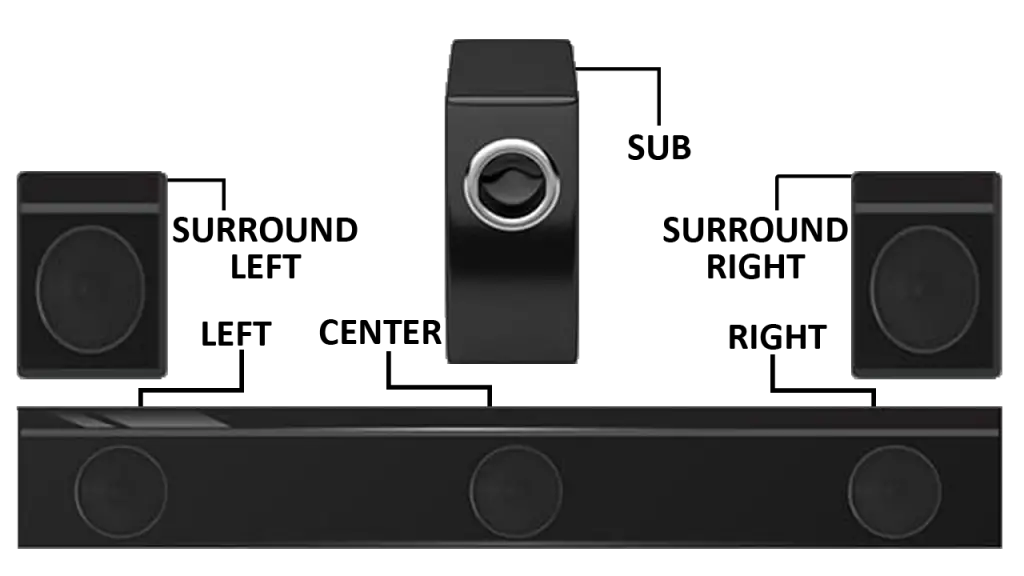
The 5.1 system marks the beginning of true surround sound. It includes two surround speakers, providing an immersive audio experience.
Speaker placement for 5.1 Surround Sound system: Two speakers are positioned at the front, with one central speaker for dialogue. Two surround sound speakers are placed on either side of the listener.
7.1 Surround Sound System
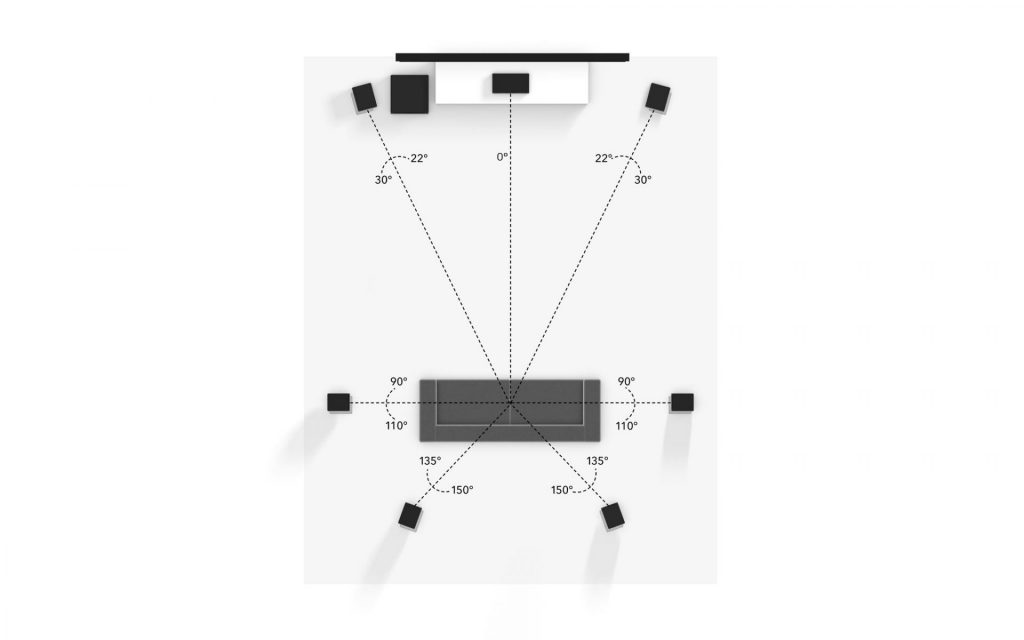
The 7.1 system adds two rear speakers to the 5.1 configuration, enveloping the listener in sound.
Speaker Placement for 7.1 Surround sound system: Similar to the 5.1 setup but with two additional rear speakers positioned behind the listener.
7.2 Surround Sound System An evolution of the 7.1 system, the 7.2 setup includes an extra subwoofer for enhanced bass.
7.1.2 Surround Sound System This setup introduces two upward-firing speakers, adding a dimension of height to the audio experience.
Speaker placement for 7.1.2 Surround Sound System: Similar to the 7.1 setup but with two additional upward-firing speakers.
9.1 Surround Sound System
For audiophiles seeking a premium audio experience, the 9.1 system offers nine main speakers and a subwoofer, with added height speakers.
9.1.2 Surround Sound System A high-end setup similar to the 9.1 but with ceiling speakers for an elevated audio experience.
Common Queries and Opinions on Surround Sound Systems
1. Difference between 3.1 and 5.1 Sound Systems:
- 3.1 System: Represents a 4-channel sound system with 3 speakers and one subwoofer. The speakers are positioned Left-Center-Right (L-C-R) and the subwoofer is usually on the ground level in the center. This system is mainly used for dialogue and stereo sounds.
- 5.1 System: A more common 6-channel sound system with 5 speakers and one subwoofer. The speaker positioning includes front left, center, front right, surround left, and surround right. This system provides a more immersive audio experience.
- Opinions: Most users prefer the 5.1 system for a more comprehensive audio experience. However, for those who prioritize dialogue or are limited by space, a 3.1 system might suffice.
2. Number of Audio Channels Needed:
- Discussion: Users often debate the necessity of having setups with 9, 11, or 13 regular channels plus Atmos/DTS:X speakers. The consensus is that a proper 5.1 setup should be the main focus for most users. However, for those with larger rooms or seeking a more immersive experience, a 7.1.4 setup is ideal.
- Opinions: While some users are satisfied with a 5.1 setup, others believe that having two subwoofers (7.2.4) offers full immersion. The choice often boils down to room size, budget, and personal preference.
3. Understanding Sound Channels:
- Discussion: Users often get confused about how sound channels work, especially when using devices like AV receivers. The main point is that the number of speakers isn’t as crucial as the ability to place sound precisely where desired.
- Opinions: Some users believe that while having more speakers can enhance the audio experience, the room’s acoustics and speaker placement play a more critical role. For a comprehensive guide on how to place your speakers for the best sound experience, visit our surround sound speaker placement guide.
4. Why isn’t 9.1 or 11.1 More Universal?
- Discussion: The evolution of sound systems has seen a shift from track-based systems (like 5.1 and 7.1) to object-based systems like Dolby Atmos and DTS:X. These newer systems focus on placing sounds in a 3D space rather than assigning them to specific channels.
- Opinions: While some users believe that systems beyond 7.1 offer a richer experience, others argue that most rooms aren’t large enough to support that many speakers effectively.
5. Understanding Soundbar Channels:
- Discussion: Soundbars, like the Q930B, are often marketed with multiple channels, leading to confusion among users. The main takeaway is that while soundbars can simulate surround sound, they might not offer the same experience as dedicated multi-channel setups.
- Opinions: Some users believe that soundbars, even those with multiple channels, cannot replicate the experience of a full surround sound system. However, they are a significant upgrade from standard TV speakers.
6. When to Choose 9.1 Over 7.1:
- Discussion: The choice between a 9.1 and 7.1 setup often depends on the user’s room size and desired audio experience. While 9.1 can offer a richer experience, it might be overkill for smaller rooms or users who are satisfied with a 7.1 setup.
- Opinions: The decision often comes down to personal preference, with some users prioritizing a more immersive experience and others focusing on practicality and budget.
Which one’s better for you?
Choosing the right surround sound system depends on your room’s specifications, budget, and personal preferences. Consider factors like room size, shape, and height when making a decision. The ideal system will align with your needs and enhance your audio experience.

I’m Shaun Conroy, an audiophile & founder of HiFi Audios. Holding a Bachelor’s in Sound Engineering, I bring deep expertise in audio devices and offer insights & recommendations to fellow enthusiasts.

